Kevin Duarte
Plug-and-Play Diffusion Distillation
Jun 04, 2024



Abstract:Diffusion models have shown tremendous results in image generation. However, due to the iterative nature of the diffusion process and its reliance on classifier-free guidance, inference times are slow. In this paper, we propose a new distillation approach for guided diffusion models in which an external lightweight guide model is trained while the original text-to-image model remains frozen. We show that our method reduces the inference computation of classifier-free guided latent-space diffusion models by almost half, and only requires 1\% trainable parameters of the base model. Furthermore, once trained, our guide model can be applied to various fine-tuned, domain-specific versions of the base diffusion model without the need for additional training: this "plug-and-play" functionality drastically improves inference computation while maintaining the visual fidelity of generated images. Empirically, we show that our approach is able to produce visually appealing results and achieve a comparable FID score to the teacher with as few as 8 to 16 steps.
Learning with Capsules: A Survey
Jun 06, 2022
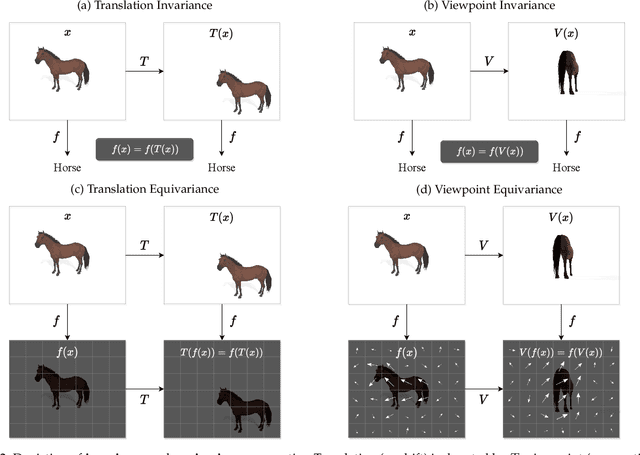
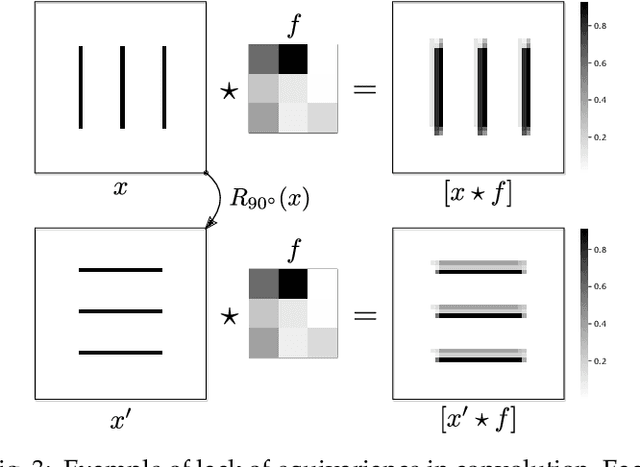
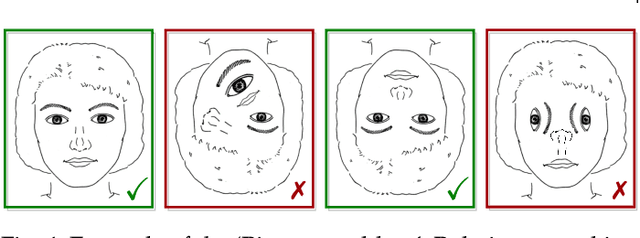
Abstract:Capsule networks were proposed as an alternative approach to Convolutional Neural Networks (CNNs) for learning object-centric representations, which can be leveraged for improved generalization and sample complexity. Unlike CNNs, capsule networks are designed to explicitly model part-whole hierarchical relationships by using groups of neurons to encode visual entities, and learn the relationships between those entities. Promising early results achieved by capsule networks have motivated the deep learning community to continue trying to improve their performance and scalability across several application areas. However, a major hurdle for capsule network research has been the lack of a reliable point of reference for understanding their foundational ideas and motivations. The aim of this survey is to provide a comprehensive overview of the capsule network research landscape, which will serve as a valuable resource for the community going forward. To that end, we start with an introduction to the fundamental concepts and motivations behind capsule networks, such as equivariant inference in computer vision. We then cover the technical advances in the capsule routing mechanisms and the various formulations of capsule networks, e.g. generative and geometric. Additionally, we provide a detailed explanation of how capsule networks relate to the popular attention mechanism in Transformers, and highlight non-trivial conceptual similarities between them in the context of representation learning. Afterwards, we explore the extensive applications of capsule networks in computer vision, video and motion, graph representation learning, natural language processing, medical imaging and many others. To conclude, we provide an in-depth discussion regarding the main hurdles in capsule network research, and highlight promising research directions for future work.
Routing with Self-Attention for Multimodal Capsule Networks
Dec 01, 2021



Abstract:The task of multimodal learning has seen a growing interest recently as it allows for training neural architectures based on different modalities such as vision, text, and audio. One challenge in training such models is that they need to jointly learn semantic concepts and their relationships across different input representations. Capsule networks have been shown to perform well in context of capturing the relation between low-level input features and higher-level concepts. However, capsules have so far mainly been used only in small-scale fully supervised settings due to the resource demand of conventional routing algorithms. We present a new multimodal capsule network that allows us to leverage the strength of capsules in the context of a multimodal learning framework on large amounts of video data. To adapt the capsules to large-scale input data, we propose a novel routing by self-attention mechanism that selects relevant capsules which are then used to generate a final joint multimodal feature representation. This allows not only for robust training with noisy video data, but also to scale up the size of the capsule network compared to traditional routing methods while still being computationally efficient. We evaluate the proposed architecture by pretraining it on a large-scale multimodal video dataset and applying it on four datasets in two challenging downstream tasks. Results show that the proposed multimodal capsule network is not only able to improve results compared to other routing techniques, but also achieves competitive performance on the task of multimodal learning.
PLM: Partial Label Masking for Imbalanced Multi-label Classification
May 22, 2021



Abstract:Neural networks trained on real-world datasets with long-tailed label distributions are biased towards frequent classes and perform poorly on infrequent classes. The imbalance in the ratio of positive and negative samples for each class skews network output probabilities further from ground-truth distributions. We propose a method, Partial Label Masking (PLM), which utilizes this ratio during training. By stochastically masking labels during loss computation, the method balances this ratio for each class, leading to improved recall on minority classes and improved precision on frequent classes. The ratio is estimated adaptively based on the network's performance by minimizing the KL divergence between predicted and ground-truth distributions. Whereas most existing approaches addressing data imbalance are mainly focused on single-label classification and do not generalize well to the multi-label case, this work proposes a general approach to solve the long-tail data imbalance issue for multi-label classification. PLM is versatile: it can be applied to most objective functions and it can be used alongside other strategies for class imbalance. Our method achieves strong performance when compared to existing methods on both multi-label (MultiMNIST and MSCOCO) and single-label (imbalanced CIFAR-10 and CIFAR-100) image classification datasets.
Found a Reason for me? Weakly-supervised Grounded Visual Question Answering using Capsules
May 11, 2021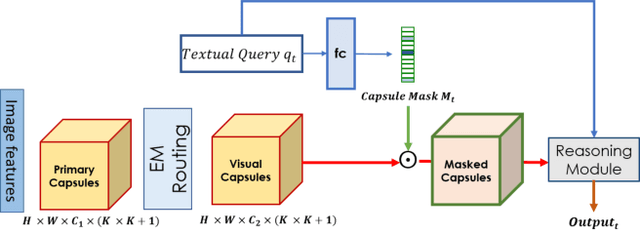
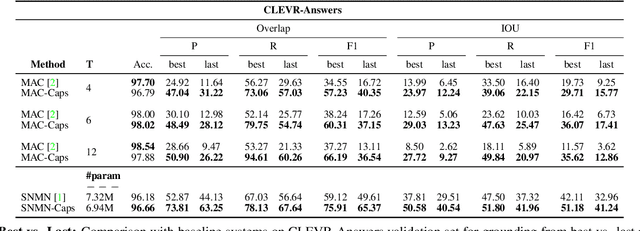
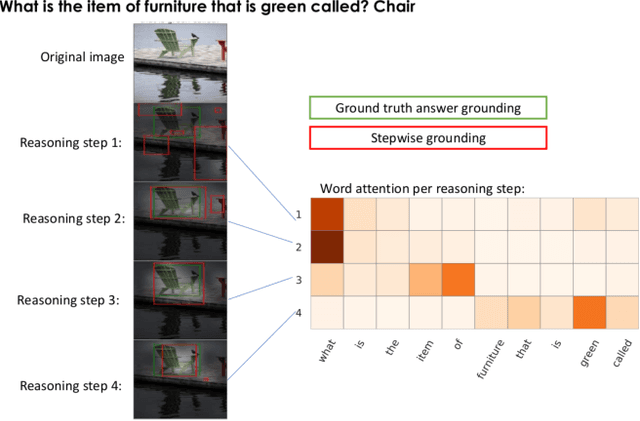
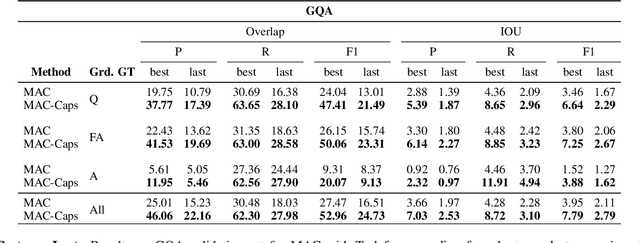
Abstract:The problem of grounding VQA tasks has seen an increased attention in the research community recently, with most attempts usually focusing on solving this task by using pretrained object detectors. However, pre-trained object detectors require bounding box annotations for detecting relevant objects in the vocabulary, which may not always be feasible for real-life large-scale applications. In this paper, we focus on a more relaxed setting: the grounding of relevant visual entities in a weakly supervised manner by training on the VQA task alone. To address this problem, we propose a visual capsule module with a query-based selection mechanism of capsule features, that allows the model to focus on relevant regions based on the textual cues about visual information in the question. We show that integrating the proposed capsule module in existing VQA systems significantly improves their performance on the weakly supervised grounding task. Overall, we demonstrate the effectiveness of our approach on two state-of-the-art VQA systems, stacked NMN and MAC, on the CLEVR-Answers benchmark, our new evaluation set based on CLEVR scenes with ground truth bounding boxes for objects that are relevant for the correct answer, as well as on GQA, a real world VQA dataset with compositional questions. We show that the systems with the proposed capsule module consistently outperform the respective baseline systems in terms of answer grounding, while achieving comparable performance on VQA task.
Multimodal Clustering Networks for Self-supervised Learning from Unlabeled Videos
May 05, 2021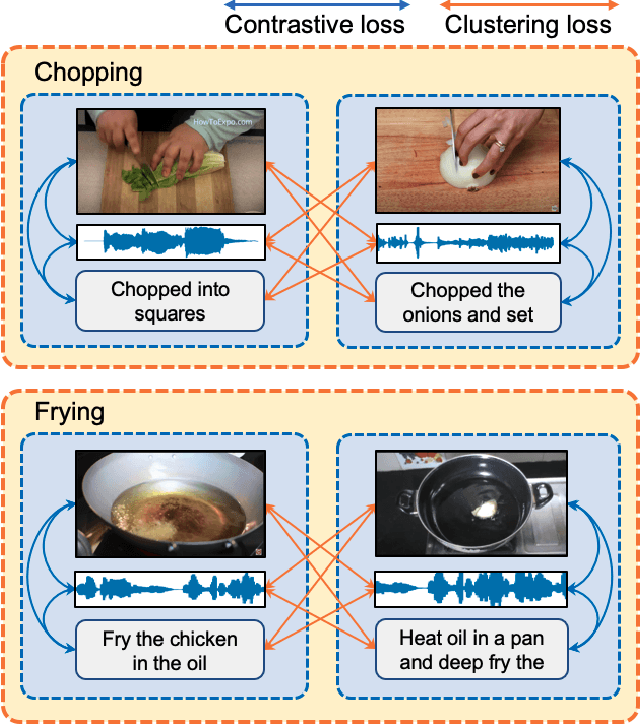
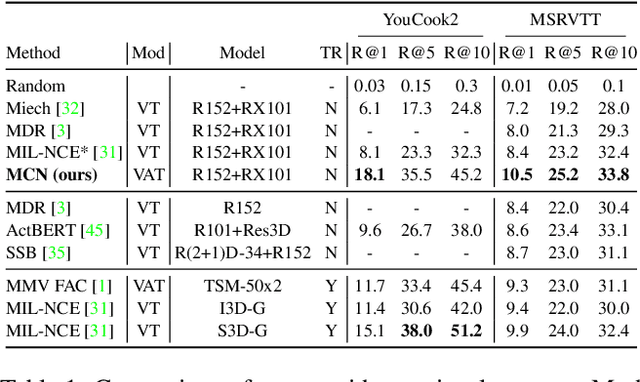
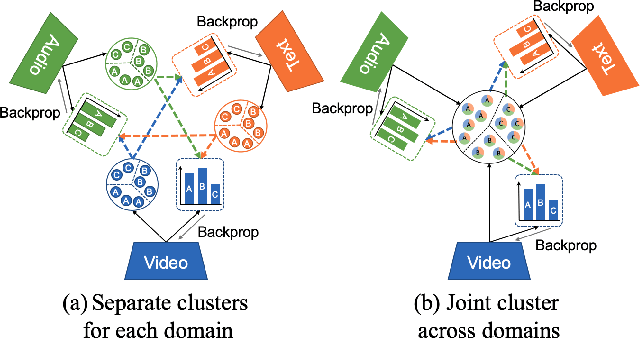
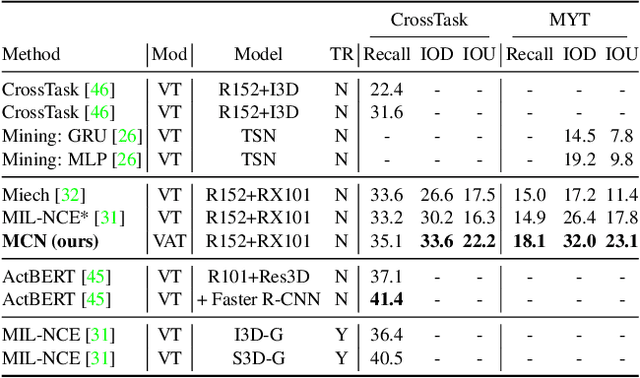
Abstract:Multimodal self-supervised learning is getting more and more attention as it allows not only to train large networks without human supervision but also to search and retrieve data across various modalities. In this context, this paper proposes a self-supervised training framework that learns a common multimodal embedding space that, in addition to sharing representations across different modalities, enforces a grouping of semantically similar instances. To this end, we extend the concept of instance-level contrastive learning with a multimodal clustering step in the training pipeline to capture semantic similarities across modalities. The resulting embedding space enables retrieval of samples across all modalities, even from unseen datasets and different domains. To evaluate our approach, we train our model on the HowTo100M dataset and evaluate its zero-shot retrieval capabilities in two challenging domains, namely text-to-video retrieval, and temporal action localization, showing state-of-the-art results on four different datasets.
Modeling Multi-Label Action Dependencies for Temporal Action Localization
Mar 05, 2021



Abstract:Real-world videos contain many complex actions with inherent relationships between action classes. In this work, we propose an attention-based architecture that models these action relationships for the task of temporal action localization in untrimmed videos. As opposed to previous works that leverage video-level co-occurrence of actions, we distinguish the relationships between actions that occur at the same time-step and actions that occur at different time-steps (i.e. those which precede or follow each other). We define these distinct relationships as action dependencies. We propose to improve action localization performance by modeling these action dependencies in a novel attention-based Multi-Label Action Dependency (MLAD)layer. The MLAD layer consists of two branches: a Co-occurrence Dependency Branch and a Temporal Dependency Branch to model co-occurrence action dependencies and temporal action dependencies, respectively. We observe that existing metrics used for multi-label classification do not explicitly measure how well action dependencies are modeled, therefore, we propose novel metrics that consider both co-occurrence and temporal dependencies between action classes. Through empirical evaluation and extensive analysis, we show improved performance over state-of-the-art methods on multi-label action localization benchmarks(MultiTHUMOS and Charades) in terms of f-mAP and our proposed metric.
In Defense of Pseudo-Labeling: An Uncertainty-Aware Pseudo-label Selection Framework for Semi-Supervised Learning
Jan 15, 2021



Abstract:The recent research in semi-supervised learning (SSL) is mostly dominated by consistency regularization based methods which achieve strong performance. However, they heavily rely on domain-specific data augmentations, which are not easy to generate for all data modalities. Pseudo-labeling (PL) is a general SSL approach that does not have this constraint but performs relatively poorly in its original formulation. We argue that PL underperforms due to the erroneous high confidence predictions from poorly calibrated models; these predictions generate many incorrect pseudo-labels, leading to noisy training. We propose an uncertainty-aware pseudo-label selection (UPS) framework which improves pseudo labeling accuracy by drastically reducing the amount of noise encountered in the training process. Furthermore, UPS generalizes the pseudo-labeling process, allowing for the creation of negative pseudo-labels; these negative pseudo-labels can be used for multi-label classification as well as negative learning to improve the single-label classification. We achieve strong performance when compared to recent SSL methods on the CIFAR-10 and CIFAR-100 datasets. Also, we demonstrate the versatility of our method on the video dataset UCF-101 and the multi-label dataset Pascal VOC.
Gabriella: An Online System for Real-Time Activity Detection in Untrimmed Security Videos
May 19, 2020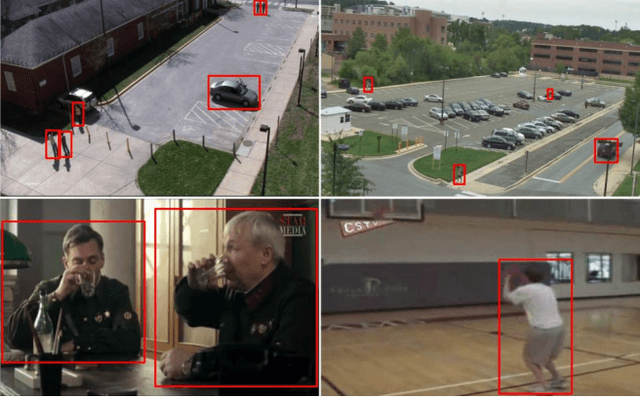
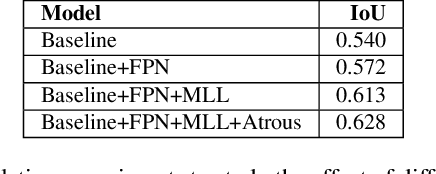
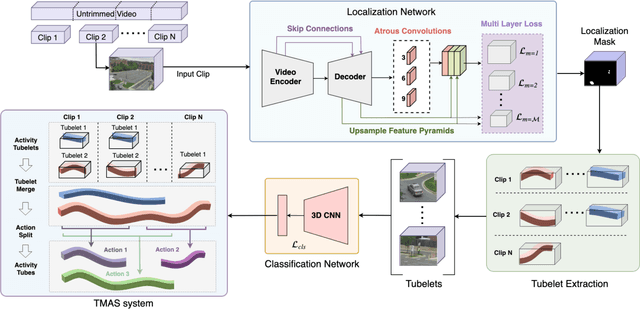

Abstract:Activity detection in security videos is a difficult problem due to multiple factors such as large field of view, presence of multiple activities, varying scales and viewpoints, and its untrimmed nature. The existing research in activity detection is mainly focused on datasets, such as UCF-101, JHMDB, THUMOS, and AVA, which partially address these issues. The requirement of processing the security videos in real-time makes this even more challenging. In this work we propose Gabriella, a real-time online system to perform activity detection on untrimmed security videos. The proposed method consists of three stages: tubelet extraction, activity classification, and online tubelet merging. For tubelet extraction, we propose a localization network which takes a video clip as input and spatio-temporally detects potential foreground regions at multiple scales to generate action tubelets. We propose a novel Patch-Dice loss to handle large variations in actor size. Our online processing of videos at a clip level drastically reduces the computation time in detecting activities. The detected tubelets are assigned activity class scores by the classification network and merged together using our proposed Tubelet-Merge Action-Split (TMAS) algorithm to form the final action detections. The TMAS algorithm efficiently connects the tubelets in an online fashion to generate action detections which are robust against varying length activities. We perform our experiments on the VIRAT and MEVA (Multiview Extended Video with Activities) datasets and demonstrate the effectiveness of the proposed approach in terms of speed (~100 fps) and performance with state-of-the-art results. The code and models will be made publicly available.
CapsuleVOS: Semi-Supervised Video Object Segmentation Using Capsule Routing
Sep 30, 2019



Abstract:In this work we propose a capsule-based approach for semi-supervised video object segmentation. Current video object segmentation methods are frame-based and often require optical flow to capture temporal consistency across frames which can be difficult to compute. To this end, we propose a video based capsule network, CapsuleVOS, which can segment several frames at once conditioned on a reference frame and segmentation mask. This conditioning is performed through a novel routing algorithm for attention-based efficient capsule selection. We address two challenging issues in video object segmentation: 1) segmentation of small objects and 2) occlusion of objects across time. The issue of segmenting small objects is addressed with a zooming module which allows the network to process small spatial regions of the video. Apart from this, the framework utilizes a novel memory module based on recurrent networks which helps in tracking objects when they move out of frame or are occluded. The network is trained end-to-end and we demonstrate its effectiveness on two benchmark video object segmentation datasets; it outperforms current offline approaches on the Youtube-VOS dataset while having a run-time that is almost twice as fast as competing methods. The code is publicly available at https://github.com/KevinDuarte/CapsuleVOS.
 Add to Chrome
Add to Chrome Add to Firefox
Add to Firefox Add to Edge
Add to Edge